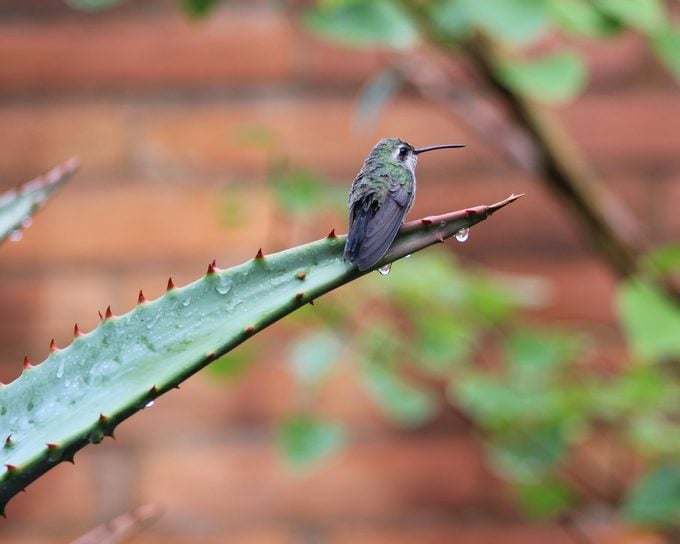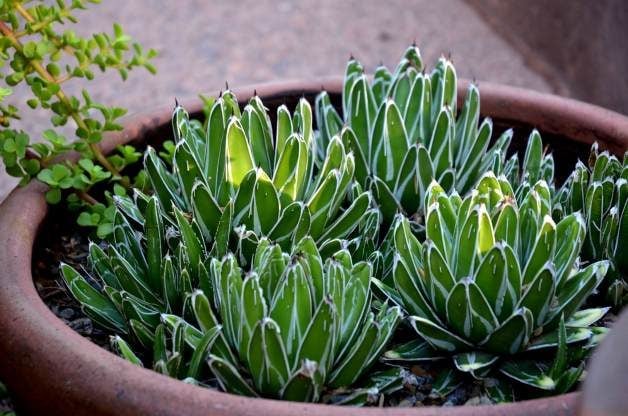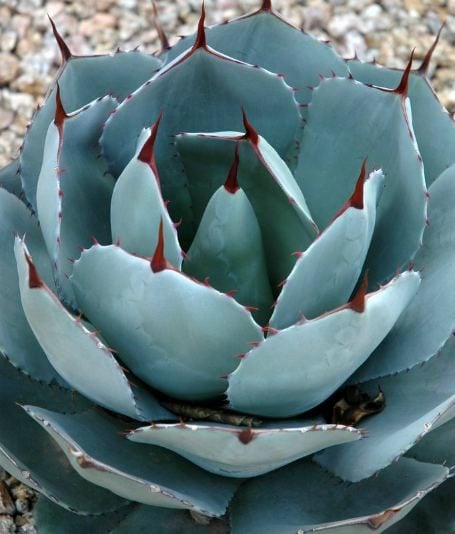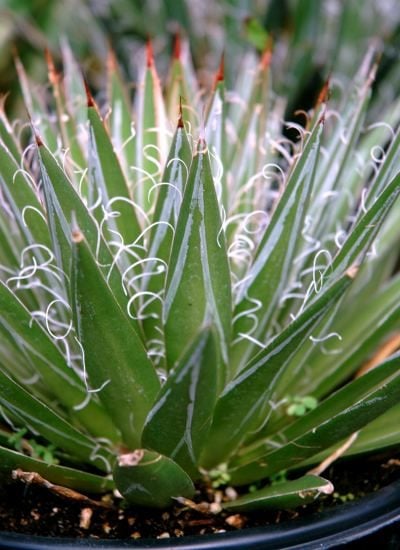Drought-Tolerant Agave Plant Grows Well in Containers
Updated: Aug. 18, 2022
Agave's spiky leaves make it a popular drought-tolerant plant. Here's how to care for an agave plant in your container garden.
Our editors and experts handpick every product we feature. We may earn a commission from your purchases.

There’s a good reason agave plant was given the unique nickname ‘century plant.’ These succulents flower just once in their lifetimes—anywhere from 7 to 50 years, depending on the species. But there’s much more to agave than its short-lived blooms. Here’s why you should add this drought tolerant plant to your container garden.
Discover how to transplant and grow agave pups.
All About Agave

Agave is a fuss-free container plant that thrives on sporadic watering. It can handle a variety of light exposures depending on the species, from full sun to filtered shade. In Zone 8 and above, most agave can be grown in the ground or in containers, year-round. (There are exceptions, so research your species ahead of time). Northern winters would be too severe for the succulent to handle, so gardeners in colder zones likely haven’t seen agave growing in landscapes.
But don’t despair, northern gardeners! If you want to grow agave in your garden, you can. Grow it as a potted agave plant—that way, you can easily move it indoors when winter temperatures arrive.
Drought tolerant aloe vera plants are easy to grow.
Agave Container Plant Care

While agave is easy to grow, it has some special requirements when grown in containers. You’ll need a fast-draining potting mix formulated for succulents. An agave plant doesn’t like wet feet, and soggy soil can kill it.
Water only when the top inch of soil is completely dry. In hot, arid climates, water once a week in summer. In other climates, water once every two to three weeks (rainfall is typically sufficient). During spring and fall, watering every three to four weeks is usually enough. An agave plant seldom needs water in winter, but you can lightly water it once a month.
Like most container plants, agave needs to be fertilized. In late spring and summer, add an all-purpose (20-20-20) liquid fertilizer at half strength, once a month. In desert climates, add fertilizer in spring and fall, but skip fertilizing in the summer. Agave doesn’t need fertilizer in winter.
However, agave does need direct sun, especially when grown indoors. Place your container next to a west or south-facing window, where it will get plenty of sunlight.
Add these five drought-tolerant shrubs to your garden.
Agave Plant Varieties

The variety of agave species is astounding. Some are thorny, while others have little to no thorns. Others have white margins on the leaves or leaf imprints. Agave with blue or gray coloring can be used to contrast with darker green plants in the landscape. Small agave can also make nice outdoor centerpieces on your patio table.
No matter your climate or plant zone, agave makes a great container plant. I’d recommend small-to-medium species like black-spined agave (Agave macroacantha), Victoria agave (Agave victoria-reginae), Agave colorata, Agave schidigera and my favorite: Agave parryi truncata.
Next, check out the top 10 flashy flowering succulents to grow.



















